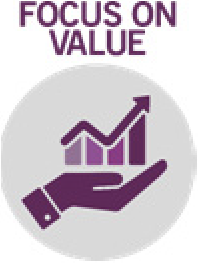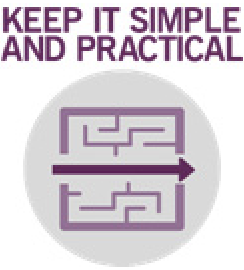ITIL 4 Managing Professional Certification Course: Create, Deliver and Support (CDS) - Employee Satisfaction Management
Understand and manage employee satisfaction: morale and engagement influence productivity, customer satisfaction, employee retention…
Need to measure many aspects of employee satisfaction:
- Leadership, culture, organization climate, job activities
- Baseline satisfaction levels
- Identify actions to improve commitment and trust
Don’t just measure, improve, and be seen to improve:
- Assign resources to act on the measurement
- Results and actions must be demonstrated back to employees
| How do you measure it ? | Employee surveys |
Consider using a third party to allow confidential feedback Surveys: local or organization wide Formal or unstructured meetings: listen for feedback One-on-one meetings: build relationships to encourage feedback Review sickness and attrition data: look for trends and changes Staff-driven metrics: allow staff to submit morale indicators |
Satisfied employees lead to satisfied customers, consider:
|
1. Working to a customer-oriented mindset An approach to sales and customer‐relations in which staff focus on helping customers meet long‐term needs and wants:
|
 |
How to create a customer‐oriented strategy:
- Create a customer value proposition (CVP): balance benefits and loyalty
- Map the customer/user experience journey: consider all touchpoints
- Recruit customer-friendly staff
- Treat employees well: happy employees make happy customers
- Train/coach staff on the customers, products, and industries they support
- Walk the talk. Senior managers should lead by example
- Listen to the voice of the customer (VoC) – surveys, meetings, etc.
- Use lots of feedback data: consider using a balanced scorecard of metrics
- Empower staff: give them the authority to solve customer issues
2. Positive Communications
Routine, repetitive IT work is rapidly moving to automation
Interaction and communication still relies on people: communication is needed with customers, suppliers, colleagues, staff…
All communication: creates opinions of the value of the team, ITSM, and the service provider
Consider how to manage and coordinate communication: small team to communicate about projects, service desk agents to communicate about incidents...
| Characteristics | Communication principles | ||
|
Communication is a two-way process We are all communicating all the time Timing and frequency matters There is no single method of communication that works for everyone The message is in the medium |
3. Workforce Planning
Purpose: the purpose of the workforce and talent management practice is to enable organization, leaders, and managers to focus on creating an effective and actionable people strategy (analysing the current workforce, determining future workforce needs, identifying the gap between the present and the future, and implementing solutions) so that the organization can achieve its mission, goals, and strategic objectives.
Workforce is arguably the most important asset of most organizations
Identify required roles, and associated knowledge, skills, attitudes...:
- To keep the organization running
- To exploit emerging technologies
- To provide leadership and organizational change capabilities
- To position the organization for future success and growth
Strategies for recruiting, retaining, developing, and managing employees
Understanding how human resources will be used to meet business goals
Numbers of staff as well as skills and competence
At multiple levels, from whole organization to a single project
For ALL capabilities: New and changed services, support, etc.
Workforce and talent management:
- Plan: understand current and future skills requirements, and staff turnover
- Improve: continually adapt to meet evolving business needs
- Engage: understand and forecast changing demand for services and how this will impact workforce
- Design and transition: understand competences needed for Agile, DevOps, etc. define training plans
- Obtain/build: training, mentoring, succession planning, recruiting or sourcing skills
- Deliver and support: measure how knowledge, abilities and attitude impact practices
People’s competence can be T-shaped, pi-shaped, comb-shaped:

Go back to ITIL 4 Managing Professional Certification Course: Create, Deliver and Support (CDS) to finish this chapter or to the main page ITIL 4 Managing Professional Certification Course.
Interesting Management
-

Part 1: A good manager, better team motivation, better team productivity, better team results
When you are managing a team, “how to be a good manager” is the “must”...
-

Report optimization, increase your time management
As manager, I am doing many reports, even when I was an ITIL consultant, I still needed to do many reports...
-

Tools to get your ITIL intermediate certifications, the missing 15 points for the ITIL 4 Managing Professional
ITIL V3 is going to be obsolete...
-

The importance of the first customer meeting for the service
Managing an IT service when I start a new company is not an easy task, particularly true, if the service...




